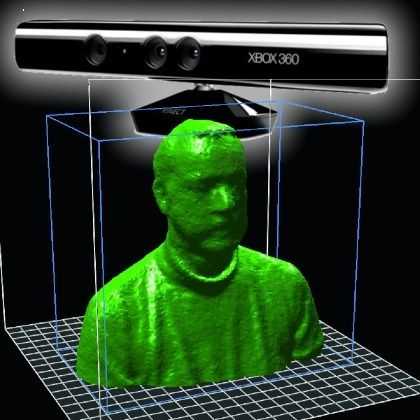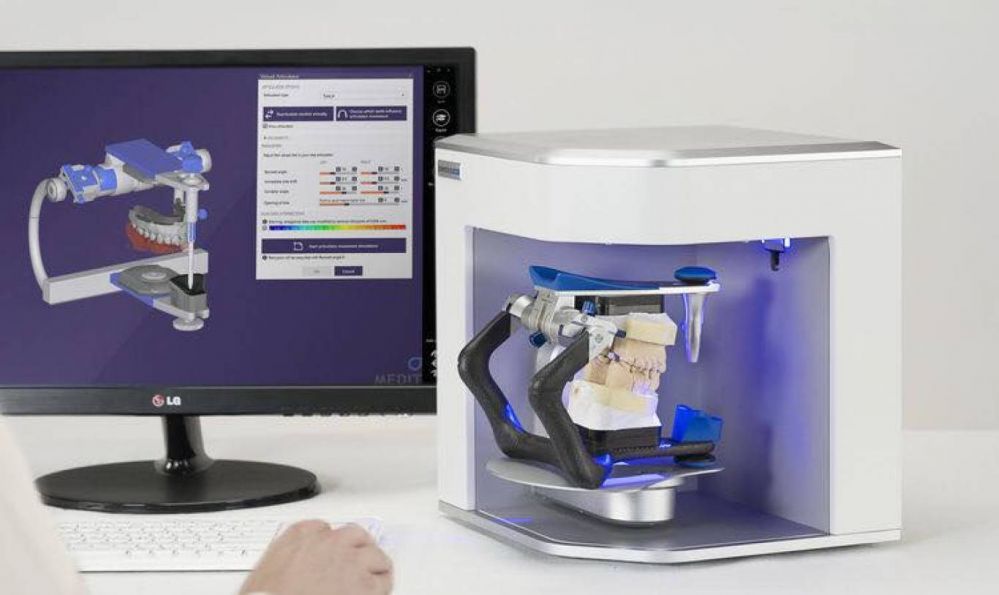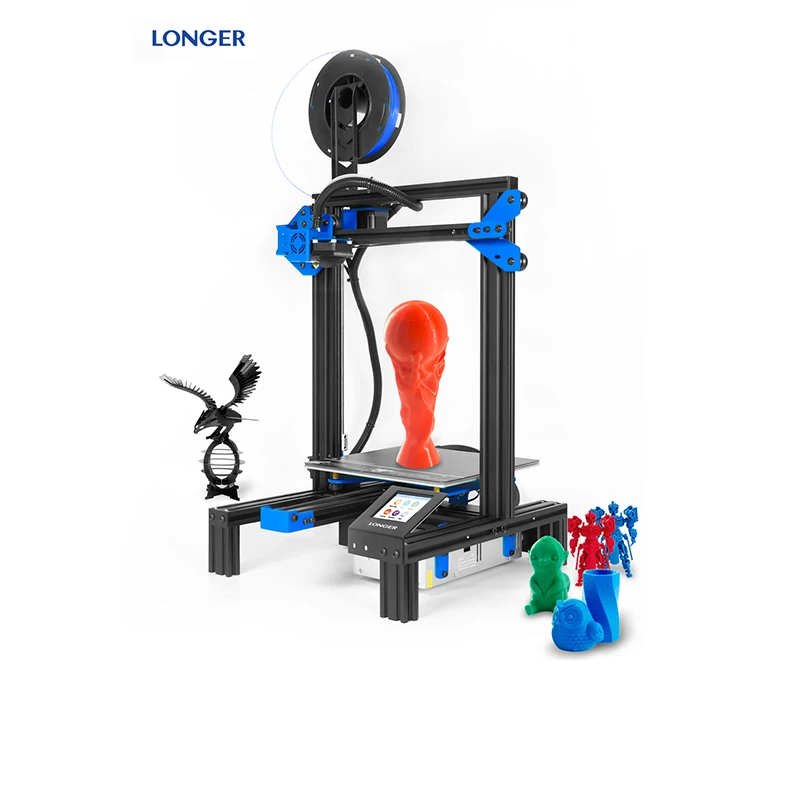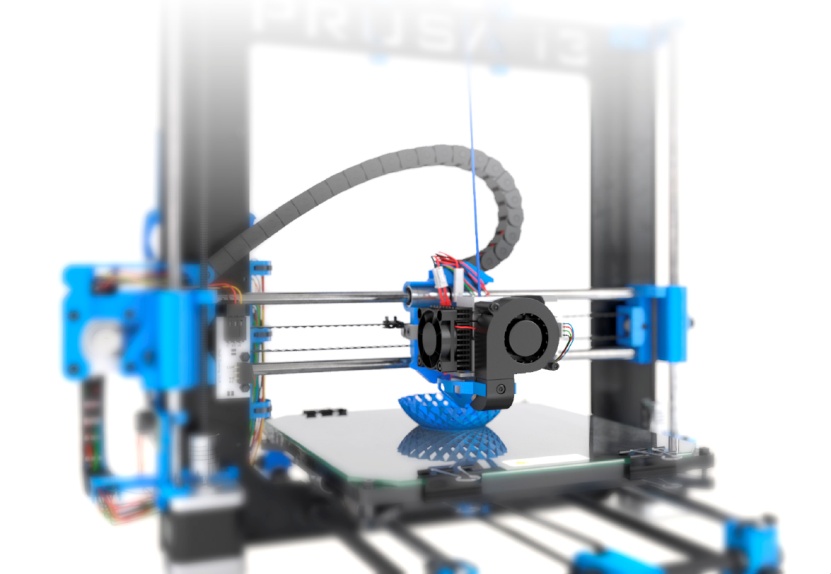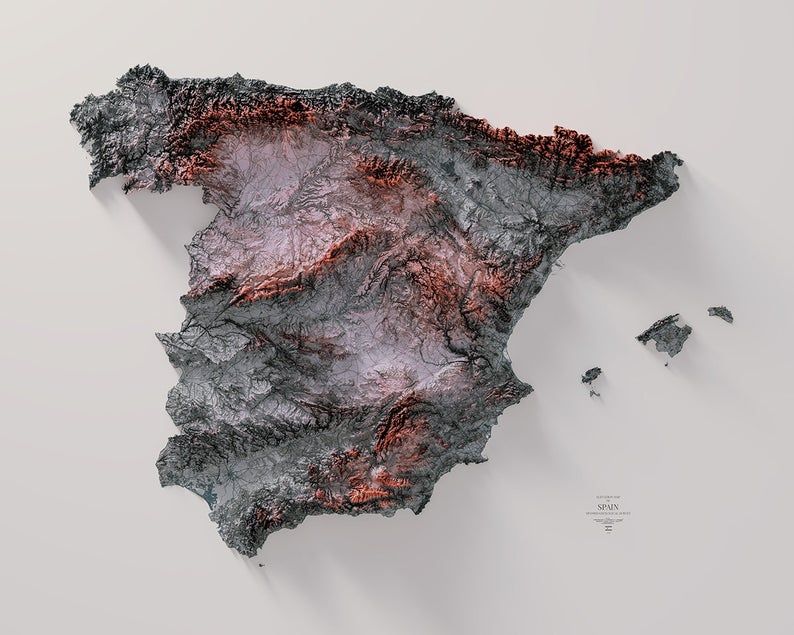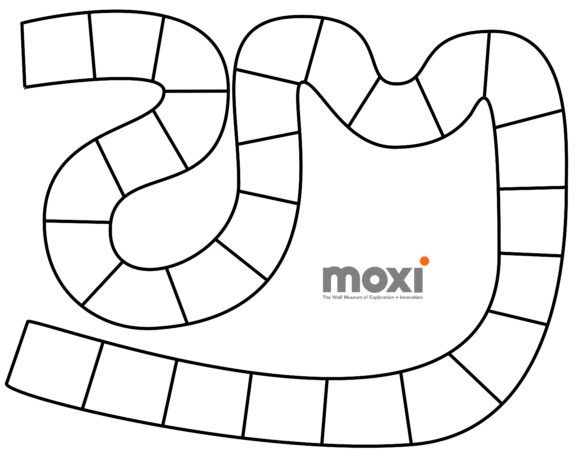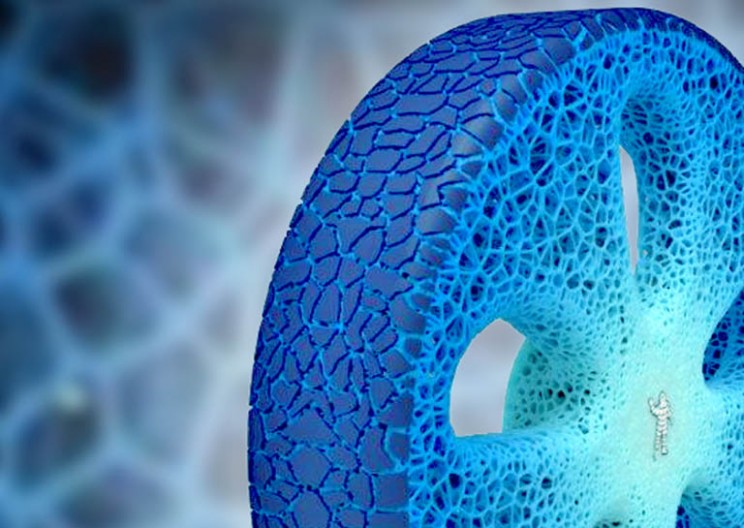Best 3d scanners 2023
Best 3D Scanner - The Top 10 3D Scanners for 2022 [Reviews]
Much like a regular scanner, laser scanning 3D uses various methods to analyze a physical object and then relay that data to a computer to create digital 3D models. The 3D digitizer process might be automatic or users might need to complete the model to their requirements by using software. The aim is usually to get an accurate model to the right standard and format, ready for 3D printing, for virtual reality applications or other purposes.
Such scanners are used in many professional industries, but with advances in home 3D printing, there are now also a good variety of home options. They are sometimes called portable 3D scanners or handheld scanners if they’re designed as such. These allow you to easily scan small to medium-sized objects for 3D printing.
Some come completely assembled while others, like 3D printers themselves, you’ll have to put them together by yourself. The benefit for those that are good with that type of thing is it reduces the price and allows for easier upgrades and modifications.
Scanning is typically done using laser triangulation or various forms of structured light to surround the object and measure its 3D dimensions or ‘geometry’. High-quality 3D scanner camera lenses also capture the color and surface texture of the object. Using accompanying or third-party software, the model can then be scaled up or down, or completely modified.
It’s never been easier to scan 3D objects!
How Do 3D Scanners Work?So, how do you scan 3D objects into a computer? Whether it’s on an industrial scale, at a small business, or on a desk at home, 3D scanners all share similar characteristics in the way they work.
The majority use laser and/or white light technology and cameras. The physical object is placed in a bed, tray, or suitable location. Electromagnetic light bounces off the object, measuring its circumference, full dimensions, and all its finer details.
Depending on the scanner it may use multiple light sources, cameras, and other tech to aid this process. The collected data is called a point cloud, which refers to the number of points captured by the laser.
The more points collected the more accurate the scan. A high-resolution scanner can capture hundreds of thousands of points in seconds and reach millions overall. The whole process only takes a few minutes.
While the light tends to be a measure of the object’s geometry, HD cameras tend to capture the surface detail and color.
The data recorded can then be fed into a computer-aided design program or similar software for inspection and manipulation. E.g. if you’re planning to use it for 3D printing, the model might need scaling up or down, hollowing, have added support structures, be re-colored or have brightness/contrast changes, etc.
There are, of course, different types of 3D scanner and scanning technology. So, let’s take a closer look at each one:
So, let’s take a closer look at each one:
There are several 3D scanner types. Before making your decision check out the section below:
Handheld vs StationaryHandheld and stationary 3D scanners often use the same technology and can overlap in their functions. The difference lies mainly in the design.
A handheld scanner has a grip and lets the user move around the object themselves to capture it at every angle.
A stationary scanner has to be positioned in front of the object, which is typically placed on a rotating plate and captures it as it spins 360 degrees. The user may have to reposition the object several times to capture every angle.
Newer designs are becoming smaller and more easily portable.
Laser TriangulationThe most common technology used in 3D scanning is laser trigonometric triangulation.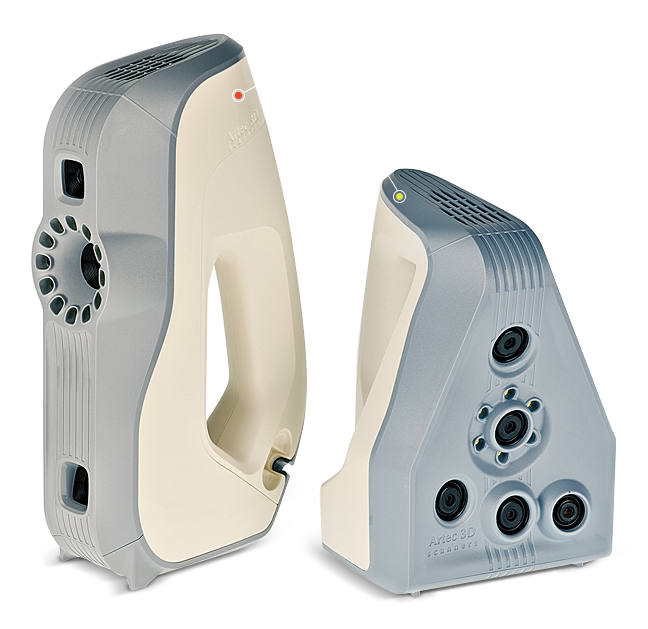 It records millions of different points on the surface of the object to build an accurate overall polygon mesh. These are common in handheld options and industrial-grade scanner machines. They can also work long-range and for laser-tracking objects.
It records millions of different points on the surface of the object to build an accurate overall polygon mesh. These are common in handheld options and industrial-grade scanner machines. They can also work long-range and for laser-tracking objects.
Similar and often used interchangeably with laser triangulation, structured light or ‘white light’ projects itself in a grid-like pattern over an object. It can then measure the structure of that grid as it applies to the object by using sensors/3D scanner cameras and triangulation.
Long RangeLonger range scanners use phase shift or pulse technology that can capture millions of points while rotating 360 degrees with the aid of mirrors. This is more commonly used to scan large objects like cars or buildings.
They might also use ‘time of flight’ technology that measures the distance of an object in relation to the speed of light and the time it takes for it to return to a sensor.
This is less relevant for everyday 3D scanning and printing.
3D Scanning ApplicationsThere are many different applications for 3D laser scanning - from those for 3D printing at home, to prototyping, industrial scale medical supply production and even architecture.
Hobbyist 3D printingCheaper 3D scanners are typically used by home users for scanning simple objects and 3D printing them for fun.
MedicalThe medical field and dentistry commonly use 3D scanning to create implants and aids to serve their patients’ needs. For example, scanning people’s feet with a high-quality 3D scanner allows for the creation of orthotics (shoe inserts). It is also used in the creation of prosthetics.
Virtual EngineeringIndustrial 3D scanners are used both in the creation and quality control of cars, planes, and even aerospace. It ensures existing parts are as accurate as their original models and that new viable parts are made.
From the home computer desk to the manufacturing floor, 3D scanning allows users to reverse engineer or copy existing objects. Saved models also allow for the reconstruction of damaged objects.
Virtual RealityFrom creating realistic 3D worlds to the people that occupy them, 3D scanning devices are integral to the growing virtual reality industry. This ranges from AAA video games, virtual cinematography, and computer-generated imagery (CGI), to virtual tours and office meetings. It is also a side industry to motion capture.
ForensicsCSI has come a long way. Forensic experts nowadays don’t just have to rely on memory, photos, and evidence of a crime scene. They can capture the entire location in a full 3D model for closer inspection and for running through different scenarios.
Archeology and ArchivingFrom museums to libraries, 3D scanning is being used to log and preserve everything from artifacts to digitizing books.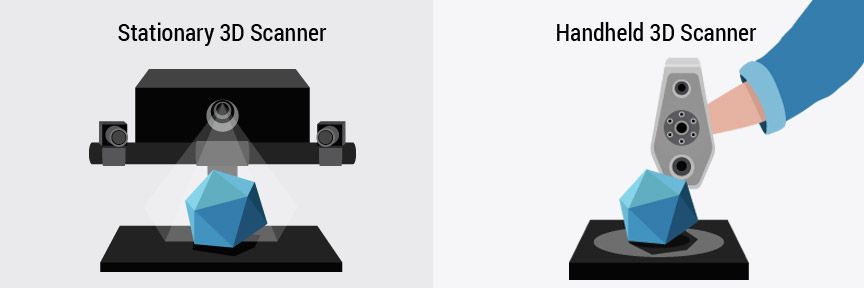 This also gives experts and the public remote access.
This also gives experts and the public remote access.
3D scanning can also help architects map the areas they will be designing their buildings in, take inspiration from existing architecture, and aid in building miniatures/prototypes.
What Should I Know Before Buying a 3D Scanner?Before you buy a 3D scanner, there are several things to consider:
- your budget
- what you’ll actually be using it for
- it’s speed and accuracy
- the device’s other features.
3D laser scanner price ranges vary greatly. On the cheaper end, you may be able to pick one up for home for just shy of $300, like the XYZprinting 3D Scanner 1.0 A. However, if you want the highest overall quality and the ability to scan small and large objects. Or, if you’re a professional and need a 3D part scanner in a field like medical implants or automotive parts, you’re looking at anywhere between $3,000 and $35,000.
Typically, it’s best to look for 3D scanners for sale online where you can find the best selection and prices.
3D PrintingWhile a dual 3D printer scanner combo is rare, if you want to scan models for 3D printing, you will need to make sure it has good accuracy and resolution. The software also must be able to export to a usable format. You will need to check your 3D printer and its own software to see what file types it accepts and then choose your scanner accordingly.
Fortunately, almost all of our 3D scanner reviews include devices that can export in common file types like OBJ and STL.
It’s typically only the more expensive scanners that are good for other applications, like VR, full-body scanning, architecture, and engineering.
Handheld vs StationaryWe already explained the difference, but basically, a handheld scanner is mobile, while the stationary one will require you to move and adjust the object. Neither is necessarily better than the other, it’s all down to your needs.
Neither is necessarily better than the other, it’s all down to your needs.
How fast is the scanner? Do you have a lot of spare time or require the job to be done as fast as possible? All 3D scanners will take a few minutes to complete, while many scanning complex objects in high resolution can talk half an hour or longer.
Accuracy and ResolutionAccuracy refers to how close to the object being scanned your digitized model will be, measured in millimeters. Therefore, the smaller the better. The term resolution may be used interchangeably with accuracy or refer to the resolution of any cameras being used as part of the scanning process.
Generally, the lower the millimeter, the better. Other factors also play a role in overall quality, such as lighting conditions, color, and depth.
Object Size and SpaceSome types of 3D scanners excel at scanning small objects while others are better at medium to large. Others are all-rounders. Before buying a scanner, you should decide the general size of the items you will be scanning.
Others are all-rounders. Before buying a scanner, you should decide the general size of the items you will be scanning.
You will also need to make room for the scanner. Although all the products on our list are small and relatively portable, stationary scanners at least need a table to work from. Likewise, there will be a minimum and maximum distance the scanner must be in relation to the object being scanned.
You’ll need more room when scanning larger objects in full.
Connected DevicesAll 3D scanners need to be connected to a computer or device to help monitor the process and for saving the digital model. This is usually done via a USB or HDMI cable. You will need to check that your computer or laptop meets the minimum requirements for the scanning and modeling software. Also, make sure that you have a tablet to make real-time monitoring easier.
SoftwareYour device will either come with its own software or a popular third-party program to aid the process and to help touch-up the model once it’s scanned. Different 3D printing software is better suited to different skill levels. Some programs have a lot of features for experienced users and others do most of the basic tasks automatically. Check our 3D scanner reviews to see the software each device comes with and how advanced and easy to use it is.
Different 3D printing software is better suited to different skill levels. Some programs have a lot of features for experienced users and others do most of the basic tasks automatically. Check our 3D scanner reviews to see the software each device comes with and how advanced and easy to use it is.
Whether you’re looking for a tool for your home or something more on an industrial scale for your business, our 3D scanner reviews have something for everyone. From handheld devices to structured lightboxes with turntables, you’ll be creating 3D models or reverse engineering parts in no time. Perhaps you’ll even do a 3D selfie or two!
If you’re still unsure about 3D printing after reading our reviews and guides, check out our answers to your most commonly asked questions below.
Best 3D scanner 2022 - Expert selections for every need
What is the best 3D scanner?
Many different types of 3D scanners exist, from desktop 3D scanners to handheld 3D scanners and advanced metrology systems.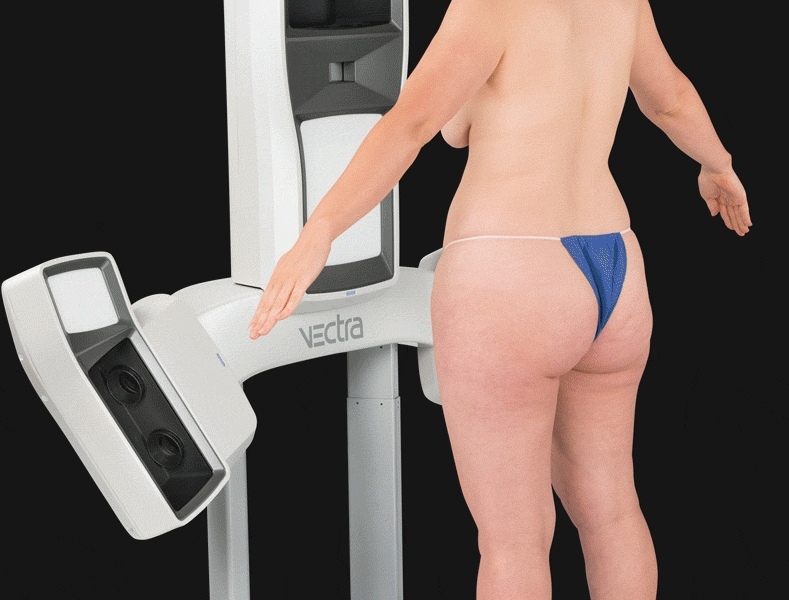 3D scanners serve an extremely wide range of applications, from reverse engineering to 3D body scanning or even forensic investigations.
3D scanners serve an extremely wide range of applications, from reverse engineering to 3D body scanning or even forensic investigations.
However, given the low number of reliable 3D scanner reviews, it can be challenging to find the best 3D scanner. It can also be complex to know what kind of 3D scanner to get based on your application. A $2,000 3D scanner won’t be sufficient for part inspection, and a $60,000 3D scanner would be overkill if you don’t need the precision.
With that in mind, our goal is to offer an overview of the best 3D scanners in different categories. We broke down our best 3D scanner picks into actionable selections:
- Professional: A mix of the best desktop and handheld options for professionals
- Affordable: Entry-level 3D scanners for makers with prices starting at around $400
- Metrology: High-precision 3D scanners for demanding use cases
- Handheld: Portative devices that can access hard-to-reach places
- SLAM and iMMS: Mobile laser 3D scanners for BIM and other large-scale applications
- TLS: Terrestrial LiDAR scanners
- Dental (desktop): Stationary 3D scanners for the dental labs
- Jewelry: Closed, high-precision 3D scanners for jewelers
- 3D body scanners: Booths and handheld color 3D scanners
Note that there can be some overlap between categories. For example, some handheld 3D scanners are precise enough for metrology or can capture colors and work for 3D body scanning.
For example, some handheld 3D scanners are precise enough for metrology or can capture colors and work for 3D body scanning.
Tip: Use the table of contents to the top left of your screen to easily navigate between our selections.
We also run through different 3D scanning applications (reverse engineering, 3D inspection, architecture, etc.) and provide concise explanations of the various 3D scanning technologies that exist.
Professional 3D scanner selection
This category groups some of the best professional 3D scanners. Our selection spans a wide price spectrum and includes both desktop scanners and handheld 3D scanners. These 3D scanners can cover most professional use cases.
| Brand | Product | Accuracy | Country | Price Approximate starting prices based on supplier-provided information and public data. Prices may vary by region, over time and do not include additional products or services (taxes, shipping, accessories, training, installation, …). | |
|---|---|---|---|---|---|
| SCANTECH (HANGZHOU) CO., LTD This brand is a certified partner from our network. | iReal 2E | 0.1 mm0.003937 in | China | $ 3,9803 980 €3,530 £593,243 ¥ | Quote |
| Shining 3D This brand is a certified partner from our network. | EinScan H | 0.1 mm0.003937 in | China | $ 4,9994 999 €4,434 £745,131 ¥ | Quote |
| Shining 3D This brand is a certified partner from our network. | EinScan HX This product has been reviewed by our team. | 0.04 mm0.001575 in | China | $ 12,00012 000 €10,644 £1,788,672 ¥ | Quote |
| Medit | Solutionix C500 | 0.01 mm0.000394 in | South Korea | $ 40,00036 500 €35,482 £5,962,240 ¥ | Quote |
| Creaform This brand is a certified partner from our network. | HandySCAN BLACK Elite This product has been reviewed by our team. | 0.025 mm0.000984 in | Canada | $ 65,00057 000 €57,658 £9,688,640 ¥ | Quote |
| GOM | ATOS Q This product has been reviewed by our team. | – | Germany | upon request | Quote |
| GOM | GOM Scan 1 This product has been reviewed by our team. | – | Germany | upon request | Quote |
| SCANTECH (HANGZHOU) CO., LTD This brand is a certified partner from our network. | SIMSCAN This product has been reviewed by our team. | 0.02 mm0.000787 in | China | upon request | Quote |
Expand to see more specs
The products in the table are ranked by price (low to high).
| Brand | Product | Technology | Category | Country | Price Approximate starting prices based on supplier-provided information and public data. | |
|---|---|---|---|---|---|---|
| SCANTECH (HANGZHOU) CO., LTD This brand is a certified partner from our network. | iReal 2E | Structured light | Mobile > Handheld | China | $ 3,9803 980 €3,530 £593,243 ¥ | Get a quote |
| Shining 3D This brand is a certified partner from our network. | EinScan H | Hybrid | Mobile > Handheld | China | $ 4,9994 999 €4,434 £745,131 ¥ | Get a quote |
| Shining 3D This brand is a certified partner from our network. | EinScan HX This product has been reviewed by our team. | Structured light | Mobile > Handheld | China | $ 12,00012 000 €10,644 £1,788,672 ¥ | Get a quote |
| Medit | Solutionix C500 | Structured light | Stationary > Desktop | South Korea | $ 40,00036 500 €35,482 £5,962,240 ¥ | Get a quote |
| Creaform This brand is a certified partner from our network. | HandySCAN BLACK Elite This product has been reviewed by our team. | Laser triangulation | Mobile > Handheld | Canada | $ 65,00057 000 €57,658 £9,688,640 ¥ | Get a quote |
| GOM | ATOS Q This product has been reviewed by our team. | Structured light | Stationary > Industrial | Germany | upon request | Get a quote |
| GOM | GOM Scan 1 This product has been reviewed by our team. | Structured light | Stationary > Desktop | Germany | upon request | Get a quote |
| SCANTECH (HANGZHOU) CO., LTD This brand is a certified partner from our network. | SIMSCAN This product has been reviewed by our team. | Laser triangulation | Mobile > Handheld | China | upon request | Get a quote |
Overview of the best professional 3D scanners
The iReal 2E is another versatile 3D scanning option in the entry-level price range.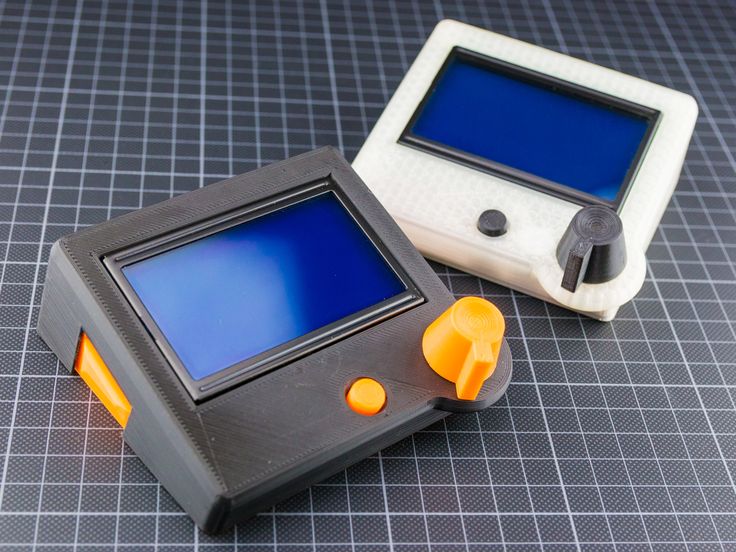 It uses VCEL structured light to capture medium- to large-sized objects. Like infrared light, VCEL light is invisible to the human eye and is therefore also particularly adapted to face and body 3D scanning.
It uses VCEL structured light to capture medium- to large-sized objects. Like infrared light, VCEL light is invisible to the human eye and is therefore also particularly adapted to face and body 3D scanning.
Scantech has reported diverse use cases for the iReal 2E 3D scanner, namely in forensic investigations, healthcare, and even culture preservation. In the latter, Scantech’s customer 3D scanned a woman performing different Tai Chi movements– an interesting and uncommon application!
Contact manufacturer Get a quote Add to comparison
The EinScan H was launched alongside the EinScan HX in September 2020. It uses a combination of structured LED light and infrared light, with a built-in color camera for texture acquisition.
This 3D scanner can therefore serve a range of applications involving color capture, with uses in retail, art preservation, healthcare, and more. Furthermore, its infrared light is eye-safe and won’t blind users during a face or body scan.
Shining 3D’s versatile EinScan H is a great entry-level deal for most basic use cases, and its software is getting more intuitive by the update.
Contact manufacturer Get a quote Add to comparison
The EinScan HX features hybrid technology: it has both structured LED light and laser triangulation capabilities, an industry-first from Shining 3D. Each technology is accessible through a specific mode that the user chooses at the beginning of a 3D scanning process.
After reviewing the HX, we found that it is a powerful and versatile product, capable of 3D scanning parts of various properties (sizes, colors, textures). It has a nice and sturdy finish and is easy to manipulate. In addition, the little weight it has is very well distributed to offer an ergonomic balance.
In this price range and at this level of performance, the EinScan HX is unrivaled.
Read the full review: Shining 3D EinScan HX review
Contact manufacturer Get a quote Add to comparison
The SIMSCAN is extremely lightweight for a handheld 3D scanner, weighing only 570 grams. It’s also very compact– the absolute smallest in its class– with dimensions of 203 x 80 x 44 millimeters.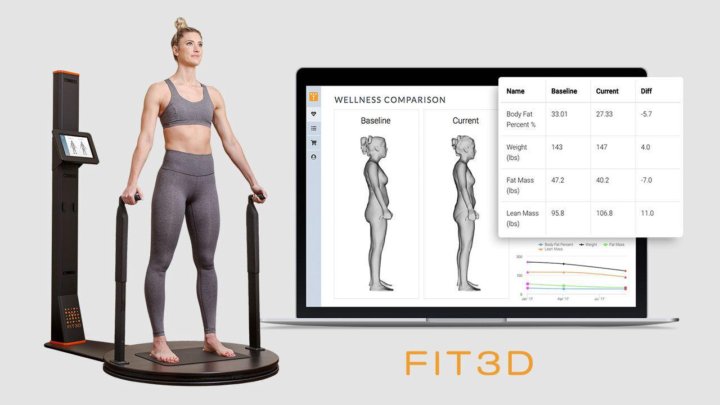 Scantech earned a Red Dot Design Award in 2021 for the SIMSCAN’s disruptive design.
Scantech earned a Red Dot Design Award in 2021 for the SIMSCAN’s disruptive design.
After using the SIMSCAN to 3D scan various types of parts, we can confirm it’s an excellent product that feels, looks, and works great. With a price of around €25,000, the SIMSCAN’s price-to-performance is outstanding. The only blemish lies in the software, but it receives updates regularly and you can export your scans to your preferred suite.
Read the full review: Scantech SIMSCAN review
Contact manufacturer Get a quote Add to comparison
The BLACK Elite tops out Creaform’s flagship HandySCAN range, which we have reviewed several times over the years. It delivers a powerful performance that reminds us of the Metrascan 750, but without all the hurdles (complex setup, number of parts and accessories, and large footprint).
Creaform’s HandySCAN BLACK Elite boasts a clean, robust finish. Everything exudes quality and rigor, the attention to detail is similar to the feeling that Apple products give off. It’s no wonder this scanner received a Red Dot Design Award (2019).
It’s no wonder this scanner received a Red Dot Design Award (2019).
Read the full review: HandySCAN BLACK Elite review
Contact manufacturer Get a quote Add to comparison
With a starting price of around €20,000, the GOM Scan 1 is GOM’s most entry-level, metrology-grade solution. We visited GOM’s Benelux HQ to review the scanner in early 2022, and were not disappointed.
The offer? GOM quality and performance at an affordable price. It is on par with high-end metrology 3D scanners and is quite fast at 6,000,000 points per scan. The GOM Scan 1 also benefits from the same, powerful GOM Inspect software as its more premium counterparts.
It is a small, lightweight, and precise machine packed with very serious capabilities.
Read the full review: GOM Scan 1 review
Contact manufacturer Get a quote Add to comparison
The ATOS Q is part of GOM’s ATOS lineup, a range of industrial-grade optical metrology solutions. It is aimed at industrial users looking for a powerful and flexible metrology solution at a reasonable price.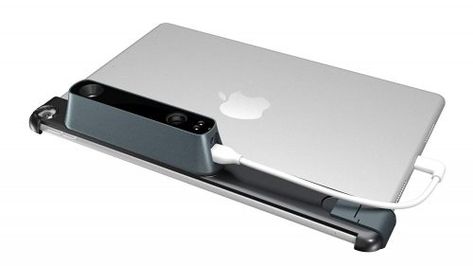
One of the ATOS Q’s key selling points is the fact that it can be easily moved along an assembly line or from one site to another. It can’t be qualified as “portable”, but is without a doubt “transportable”.
The scanner also offers a lot of flexibility in part type and size thanks to its multiple lenses and is able to acquire difficult surfaces thanks to its blue light equalizer.
Read the full review: GOM ATOS Q review
Contact manufacturer Get a quote Add to comparison
Solutionix is part of the larger, South-Korean Medit group, and is known for its high-precision dental 3D scanners. Their C500 is able to scan larger objects while benefitting from the same, excellent precision and resolution. Its automatic turntable not only turns but also tilts, providing very thorough scans.
While the Solutionix C500 is sensitive to dark and shiny surfaces, it offers very clean data and high resolution when such surfaces are matted with special spray (like AESUB). The C500 comes with four different sets of lenses for varying fields of view, resolution, and accuracy. Its smallest lens set gives an accuracy of 10 microns and a resolution of just 28 microns (point-to-point distance).
Its smallest lens set gives an accuracy of 10 microns and a resolution of just 28 microns (point-to-point distance).
The C500 is particularly adapted to small parts, but can be mounted onto a tripod for the occasional large scan.
Contact manufacturer Get a quote Add to comparison
Affordable 3D scanners for makers
This selection includes some of the best affordable 3D scanners for makers.
| Brand | Product | Accuracy | Country | Price Approximate starting prices based on supplier-provided information and public data. Prices may vary by region, over time and do not include additional products or services (taxes, shipping, accessories, training, installation, …). | |
|---|---|---|---|---|---|
| Scan Dimension | SOL | – | Denmark | $ 599609 €531 £89,285 ¥ | Buy |
| Revopoint | POP 2 | 0.1 mm0.003937 in | China | $ 699711 €620 £104,190 ¥ | Buy |
| Creality | CR-SCAN 1 | 0. 1 mm0.003937 in 1 mm0.003937 in | China | $ 700700 €621 £104,339 ¥ | Contact |
| Matter and Form | Scanner V2 | 0.1 mm0.003937 in | United States | $ 749761 €664 £111,643 ¥ | Buy |
| Shining 3D This brand is a certified partner from our network. | EinScan-SE (Elite) | 0.1 mm0.003937 in | – | $ 1,1991 219 €1,064 £178,718 ¥ | Contact |
Expand to see more specs
The products in the table are ranked by price (low to high).
| Brand | Product | Technology | Country | Price Approximate starting prices based on supplier-provided information and public data. Prices may vary by region, over time and do not include additional products or services (taxes, shipping, accessories, training, installation, …). | |
|---|---|---|---|---|---|
| Scan Dimension | SOL | Laser triangulation | Denmark | $ 599609 €531 £89,285 ¥ | Buy on Amazon France |
| Revopoint | POP 2 | Structured light | China | $ 699711 €620 £104,190 ¥ | Buy on Revopoint |
| Creality | CR-SCAN 1 | Structured light | China | $ 700700 €621 £104,339 ¥ | Contact manufacturer |
| Matter and Form | Scanner V2 | Laser triangulation | United States | $ 749761 €664 £111,643 ¥ | Buy on Amazon US |
| Shining 3D This brand is a certified partner from our network. | EinScan-SE (Elite) | Structured light | – | $ 1,1991 219 €1,064 £178,718 ¥ | Contact manufacturer |
Overview of the best affordable 3D scanner options
Revopoint launched the POP 2 towards the end of 2021 after a successful Kickstarter campaign with the original POP. We reviewed the original POP shortly before this release, and it seems that some of the quacks (mainly software-related) we encountered have since been worked out. Their new software features a calibration process and a new “Wi-Fi host” mode.
The POP 2 is an interesting option for makers or beginners looking to learn more about 3D scanning. We wouldn’t particularly recommend it for professional use cases, though it can get the job done if you don’t need high resolution.
The Revopoint POP 2 can be used on a small tripod or as a handheld device, and is able to capture colors.
Buy on Revopoint Add to comparison
The EinScan-SE is a powerful entry-level desktop 3D scanner designed to capture small- to medium-sized objects in 3D. Launched back in 2017, it’s still relevant today as an affordable, professional-grade option.
Launched back in 2017, it’s still relevant today as an affordable, professional-grade option.
It is based on white structured light technology and offers two 3D capture modes: Fixed Scan and Auto Scan (with a rotating table). The Shining 3D EinScan-SE is a versatile and fast 3D scanner, suitable for a wide range of applications and designed with 3D printing applications in mind.
Contact manufacturer Add to comparison
This affordable desktop 3D scanner is geared towards hobbyists and tech enthusiasts. The SOL 3D scanner is equipped with an automatic turntable to complement its hybrid 3D scanning technology (a combination of structured light and laser triangulation).
Scan Dimension notes that this 3D scanner is easy to use, thanks to a simplified app that lets users avoid complex calibration and software manipulation.
Buy on Amazon France Add to comparison
The CR-SCAN 1 is another 3D scanner under $1,000. It can be used on a tripod as well as in handheld mode. According to Creality, the use of markers is unnecessary thanks to their AI-based alignment algorithm.
According to Creality, the use of markers is unnecessary thanks to their AI-based alignment algorithm.
Contact manufacturer Add to comparison
Matter and Form has been producing affordable desktop 3D scanners since 2014. The 3D Scanner V2 (a.k.a. MFS1V2) is, as its naming suggests, the second version of their flagship product, the Matter and Form MFS1V1 3D scanner.
It boasts a great price-to-performance ratio and is able to quickly scan 3D objects while displaying results in real time. Matter and Form also manufactures the Bevel dongle for use with 3D scanning smartphone apps.
Buy on Amazon US Add to comparison
Metrology 3D scanner selection
3D metrology is the process of acquiring highly accurate physical 3D measurements of an object. The result is a digital 3D model that users can analyze or retro-engineer.
Take quality inspection, for example. Professionals can compare the 3D scan to a reference CAD model to make sure the object respects established norms and standards.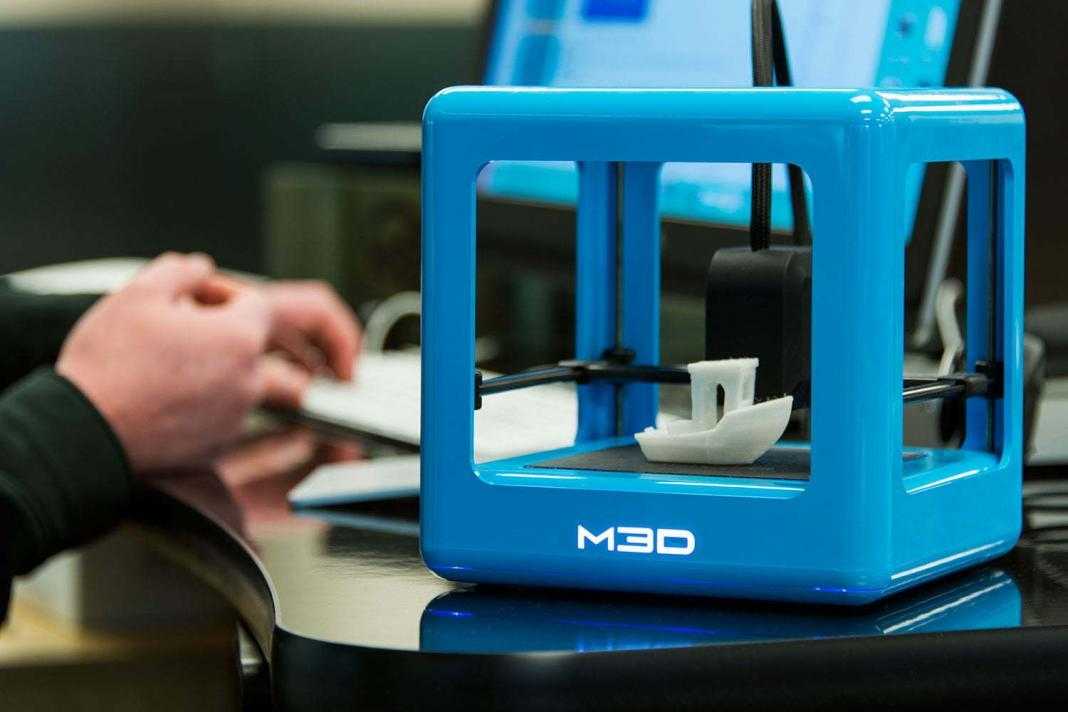 3D metrology helps ensure product quality while saving time and, thus, lowering costs.
3D metrology helps ensure product quality while saving time and, thus, lowering costs.
Handheld 3D scanner selection
Handheld 3D scanners have been gaining a lot of popularity over the past few years. They offer various benefits over other types of 3D scanners:
- Ability to access hard-to-reach places
- Relative ease of use
- Portability
Their versatility makes them suitable for a wide range of industries, including automobile, aerospace, engineering, and design, and some can even be used for 3D body scanning.
SLAM 3D scanner selection
SLAM (Simultaneous Localization and Mapping) technology allows a device to position itself and navigate through a given space based on its surroundings. Sometimes called CML (Concurrent Mapping and Localization), it was initially developed for robots and autonomous appliances.
In 3D scanning (mobile mapping), SLAM algorithms combine and use the sets of data collected from one or more sources to track the scanner’s position, all while building up an accurate, complete 3D point cloud of the surrounding environment.
SLAM-based 3D scanners can work in extremely remote locations where GPS or GNSS signals are unavailable, and make it easy to quickly 3D scan large areas like building sites and underground caves.
TLS (Terrestrial Laser Scanner) selection
Terrestrial laser scanning (TLS) is a form of 3D scanning in which tripod-mounted laser scanners are used to capture large objects and environments. The technique is widely used in construction, surveying, forestry, and other disciplines.
Also known as long-range laser scanning, TLS involves deploying a scanner in a static location, whereas other laser scanners may be handheld or mounted to vehicles to capture data from a greater number of vantage points. TLS produces more accurate scans than mobile scanning — at the expense of speed and simplicity.
These 3D scanners are often generically called LiDAR scanners, though terrestrial scanners aren’t the only type of scanner to use the technology.
Desktop dental 3D scanner selection
Bit by bit, dentists are beginning to replace traditional methods with digital dentistry. This involves the use of digital capture, digital design, and digital production technologies to improve the speed, accuracy, and profitability of dental practice.
A key part of digital dentistry is the use of 3D scanners, which capture 3D shapes using a combination of cameras and light projection before transferring the result to a computer.
Desktop dental 3D scanners capture dental models or impressions (negative imprints of a patient’s teeth and gums) and are usually used in a laboratory setting.
Jewelry 3D scanner selection
A popular use of 3D scanning technology is jewelry 3D scanning. This is the process of 3D scanning jewelry, precious metals, and gemstones with the goal of creating a digital copy of the original object. The digital twin can be used for many purposes, such as repairing or duplicating a valuable item.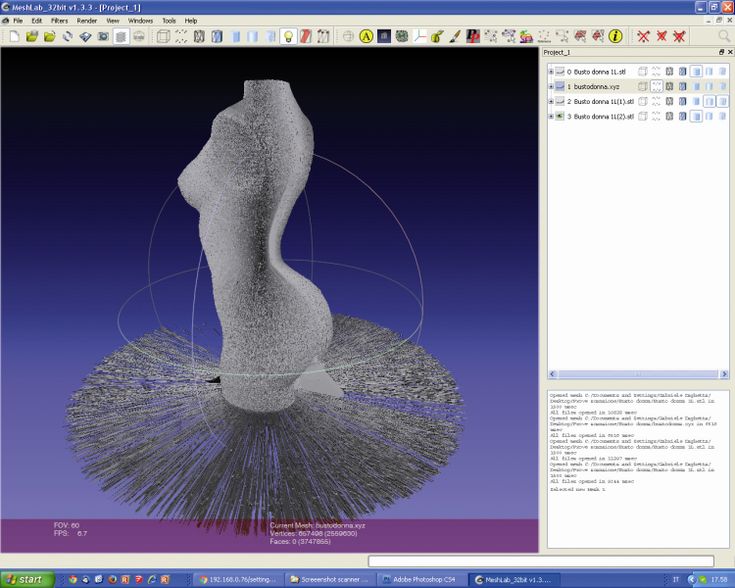
3D scanners have been adopted as a supplementary tool by traditional jewelers, but the technology has also allowed newcomers to enter the field, many of which have combined 3D scanning with jewelry 3D printing.
Most jewelry 3D scanners are enclosed or partly enclosed desktop machines that offer ideal lighting conditions. Desktop jewelry 3D scanners almost always feature an automatic turntable, or auto-rotating table, on which the piece of jewelry is placed to be scanned.
3D body scanner selection
3D body scanners are designed to capture your full body in 3D. The result is a 3D model (or 3D avatar) of your exact body shape with accurate data such as body measurements, posture analysis, textures, …
Originally developed for the fashion industry as fast and accurate 3D measurement solutions, 3D body scanners are now used in various other fields such as healthcare, 3D figurines and 3D photos, fitness, and entertainment.
To obtain a full-body 3D scan, the customer or patient holds a pose for a few seconds, which is the time it takes for the 3D scanner to capture images from all angles. The 3D software then reconstructs the final 3D model of the body by “stitching” all of the images together, generating a highly detailed 3D model. Models can have colors and textures depending on the type of body scanner.
Which 3D scanner is the best for me?
3D scanning can be used in a large variety of fields. For every application, the features necessary to generate a great 3D model are different. The 3D scanner must be chosen according to your desired use and results.
What the best 3D scanner is for you will depend on many factors, detailed below.
3D scanning field of application
The first thing to take into consideration is the field in which the 3D scanner will be used. It could be for example:
Professional use
- Small objects: dentists, jewelers, and other professionals can use 3D scanning to capture small pieces.

- Big objects: professionals such as architects and archeologists might need to 3D scan large objects such as statues, archeological fields, or buildings.
- 3D body scanning is increasingly used in various professional fields such as healthcare and 3D figurines.
Personal use
- Occasional scanning: A person might need to use 3D scanning on rare occasions or maybe just one time.
- 3D scanning on a regular basis: You can use 3D scanning for various things from making personalized objects to making a replica of yourself, friends, or family members.
Type of 3D scanned object
Dimensions and distance of the object (scan area and scanning range)
The “best 3D scanner” will depend on the dimensions and the distance of the objects you wish to 3D scan. A desktop 3D scanner can’t 3D scan a 2-meter-tall statue, and a handheld 3D scanner might not be the best option to 3D scan a very small and precise piece.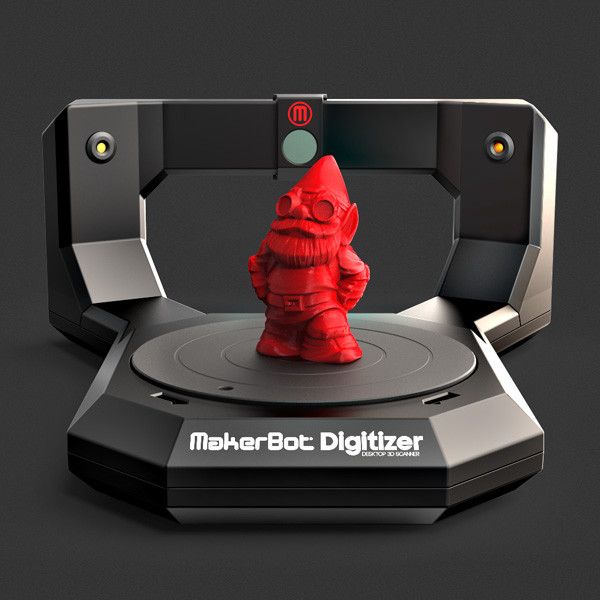
Surface of the object
Not every 3D scanner is able to capture colors. For color capture, you need a scanner with photogrammetry.
It can also be challenging to capture objects with black, shiny, or reflective surfaces. However, as 3D scanning OEMs fine-tune their technology and hardware, such surfaces are becoming less and less of a challenge. For cases where it is a challenge, it is always possible to use a white mattifying spray.
Desired resolution
Not all 3D scanners offer the same level of resolution. Therefore, depending on the quality you need, some 3D scanner models are more adapted than others. Reverse engineering requires high resolution and precision, for example.
Desktop 3D scanners
Desktop 3D scanners can be ideal for both professionals and hobbyists that need to scan small parts. They tend to be more accurate since you aren’t holding and moving the 3D scanner around yourself.
Also, many desktop 3D scanners come with (or at least optionally) an automatic turntable, which makes it much easier to get clean 3D scans.
Handheld 3D scanners
Handheld 3D scanners, a.k.a. portable 3D scanners, are versatile and can 3D scan small to very large objects. They also enable users to 3D scan hard-to-reach places. The precision and the ability to capture color and texture will depend on the 3D scanner model.
3D body scanners3D body scanners have applications in numerous fields.
- Professionals: professionals might want to 3D scan a person to make a 3D figurine, prepare for a surgical intervention, follow-up on a pregnancy or skin conditions, etc.
- Individuals: 3D body scanners can help with fitness goals and personal shape. These 3D scanners usually can’t capture color and texture but offer a high resolution.
3D scanning mobile apps
3D scanning mobile apps are ideal for occasional users that are not willing to or are unable to invest in a 3D scanner. They are not as precise as most 3D scanners, but mobile apps are a great way to get familiar with 3D scanning.
They are not as precise as most 3D scanners, but mobile apps are a great way to get familiar with 3D scanning.
3D scanner price
3D scanner prices can range from just several hundred dollars to over $100,000.
Desktop 3D scanner price
Desktop 3D scanner prices vary a lot from one model to another. It can start at a few hundred dollars and can top out at around $50,000 for the more advanced 3D scanners. More industrial-grade, robot-mountable scanners can cost double.
Handheld 3D scanner price
The handheld 3D scanner price range is very wide. A professional handheld 3D scanner can start at around $5,000 and can reach up to over $70,000 for very high-end and advanced 3D scanners.
There are plenty of great entry-level options for a couple of thousand dollars. Mid-range handheld 3D scanners tend to cost between $10,000 and $30,000.
Industrial 3D scanner price
Industrial 3D scanners generally offer more cutting-edge features and higher precision.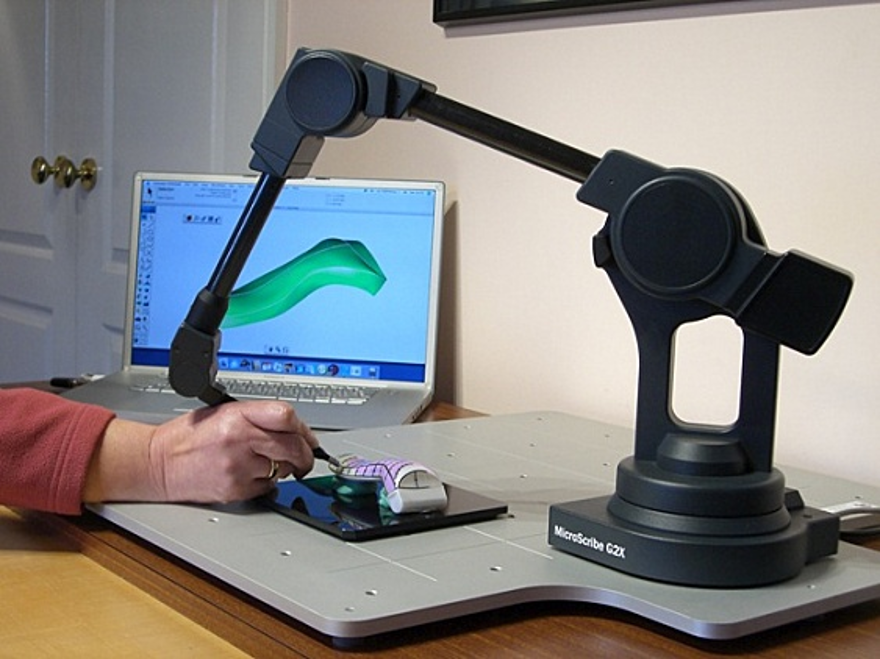 Hence, their prices can be pretty high, ranging from $10,000 for the simplest ones to more than $100,000 for the most evolved ones.
Hence, their prices can be pretty high, ranging from $10,000 for the simplest ones to more than $100,000 for the most evolved ones.
3D scanning applications
There are many reasons to buy a 3D scanner, for various industries and applications.
Reverse engineering
Reverse engineering, also known as retro-engineering, is the process of extracting information from an object or process and studying it. 3D scanners can be used to capture all the parts of a disassembled object to create a 3D model. The user will then be able to digitally study it in 3D afterward.
Jewelry
Jewelers are starting to use 3D printing and 3D scanning to build casts in order to create amazing jewels. Read more on our 3D printing and 3D scanning for jewelry page.
Dental
Dentists and dental labs are using 3D printing to build and create various dental appliances. Find more information on our 3D printing and 3D scanning for the dental industry.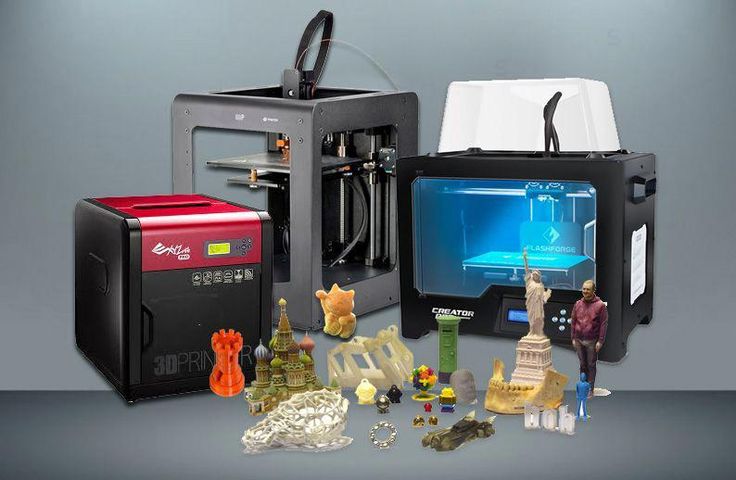
Medical
3D scanners are very versatile and are used in many different ways in healthcare, from making prosthetics to studying a person’s posture. Find more information in our guide to 3D scanning and 3D printing for the medical industry.
A dental 3D scan by Pierre-Antoine.Metrology/inspection
Industries need to make sure their factories are producing perfect products that are perfectly in line with the products’ reference dimensions. 3D scanners enable professionals to efficiently measure potential discrepancies.
Figurines and 3D selfies
3D portraits or mini-me’s are increasingly popular. To make one, you scan yourself in 3D and 3D print your mini lookalike. To learn more about the subject, you can visit our 3D printed figurines, 3D selfies, and 3D portraits page.
Architecture
Architects can use 3D scanning to capture an area, building, or habitation and present it in a more efficient way to their clients.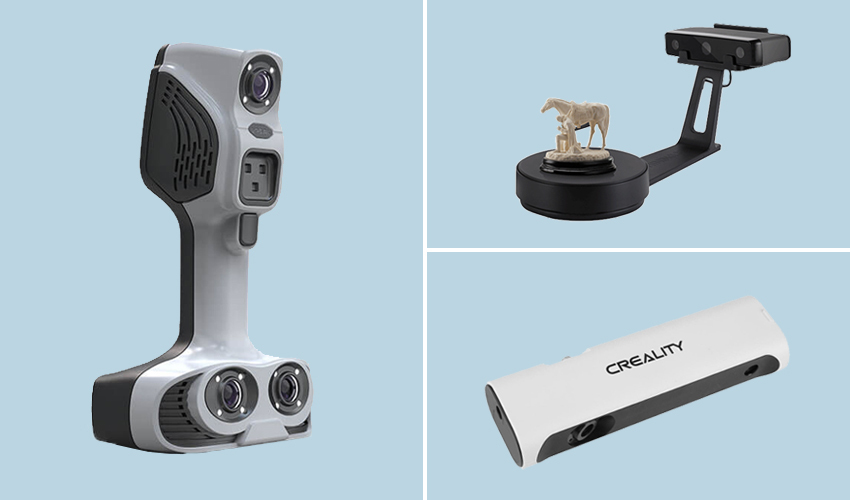 Find more information on our 3D scanning and 3D printing for architects page.
Find more information on our 3D scanning and 3D printing for architects page.
Archeology and museums
Archaeologists, museum curators, and researchers are starting to use 3D scanning to get a better view and capture ancient pieces. To read more about this topic, you can visit our 3D printing and 3D scanning in archeology and cultural preservation page.
A dot cloud of Notre Dame. Source: engadgetOverview of 3D scanning technologies
Photogrammetry
Photogrammetry consists of taking measurements from photographs to recover the exact positions of surface points.
The principle of photogrammetry is to analyze several photographs of a static subject, taken from different viewpoints, and to automatically detect pixels corresponding to the same physical point.
Photogrammetry enables scanners to capture an object’s color (a.k.a. texture). This technology also often serves to detect positioning markers (sticky targets placed on or around the object to help the scanner precisely align scans together).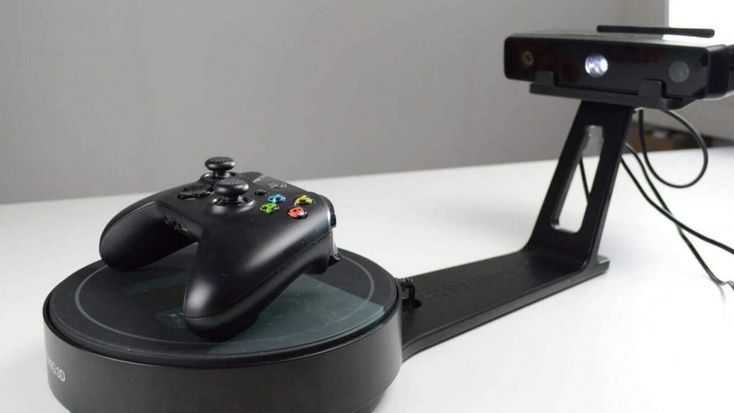
Structured light
3D scanners using structured light project a series of linear light patterns onto an object.
The system is then able to examine the deformations of each line and to calculate the distance between the 3D scanner and the object’s surface. With this data, the software is able to build an accurate 3D model of the object.
Structured light 3D scanning technology. Source: Depth BiomecanicsTriangulation
A 3D scanner using triangulation technology will project a laser beam on the object’s surface and measure the deformation of the laser ray (similar to structured light, but with one or more lasers).
3D scanning laser triangulation technology. Source: NeoMetrixContact
Contact 3D scanners probe the subject via physical touch. A touch probe moves along an object’s surface to record 3D information.
For more precise and detailed explanations, you can visit our 3D scanning technologies page.
FAQ
What is the most accurate 3D scanner?
The most accurate 3D scanners are metrology 3D scanners, which generally offer an accuracy of around 20 microns.
Is a 3D scanner worth it?
This is entirely up to how much you will be using your 3D scanner. We can however say that 3D scanning is an impressive technology that does help save a lot of time for product design, reverse engineering, part inspection, and many other use cases.
How much does a good 3D scanner cost?
Again, the definition of “good” is quite subjective in 3D scanning. Some of the best 3D scanners we have reviewed cost between $10,000 and $30,000. But a $5,000 3D scanner can do “good” if its specs meet your requirements.
Is 3D scanning expensive?
Not only is 3D scanning hardware generally expensive, but so are the necessary, professional software solutions. Sometimes, it’s a one-time fee for a permanent license; other times, a monthly or yearly subscription is the only way to access a software suite. And to run such software, you will likely require a powerful, monster of a PC with a lot of RAM and a high-end graphics card. You may also need to buy a tripod or turntable if they aren’t included in your 3D scanner package. All of this can quickly amount to several thousand dollars.
Sometimes, it’s a one-time fee for a permanent license; other times, a monthly or yearly subscription is the only way to access a software suite. And to run such software, you will likely require a powerful, monster of a PC with a lot of RAM and a high-end graphics card. You may also need to buy a tripod or turntable if they aren’t included in your 3D scanner package. All of this can quickly amount to several thousand dollars.
Day-to-day 3D scanning expenses can include cans of mattifying spray and rolls of adhesive markers if you need them. Other than that, aside from potential software subscriptions, there are no extra hidden costs.
we choose the best in 2022 in our direction
In order to expand the user audience, SHINING3D offers universal solutions - the same 3D scanner is able to satisfy the needs of ordinary consumers and be in demand in industrial production. Based on the feedback and reviews of device owners, the developers have improved the line of models, making 3D digitization and additive technologies even more accessible.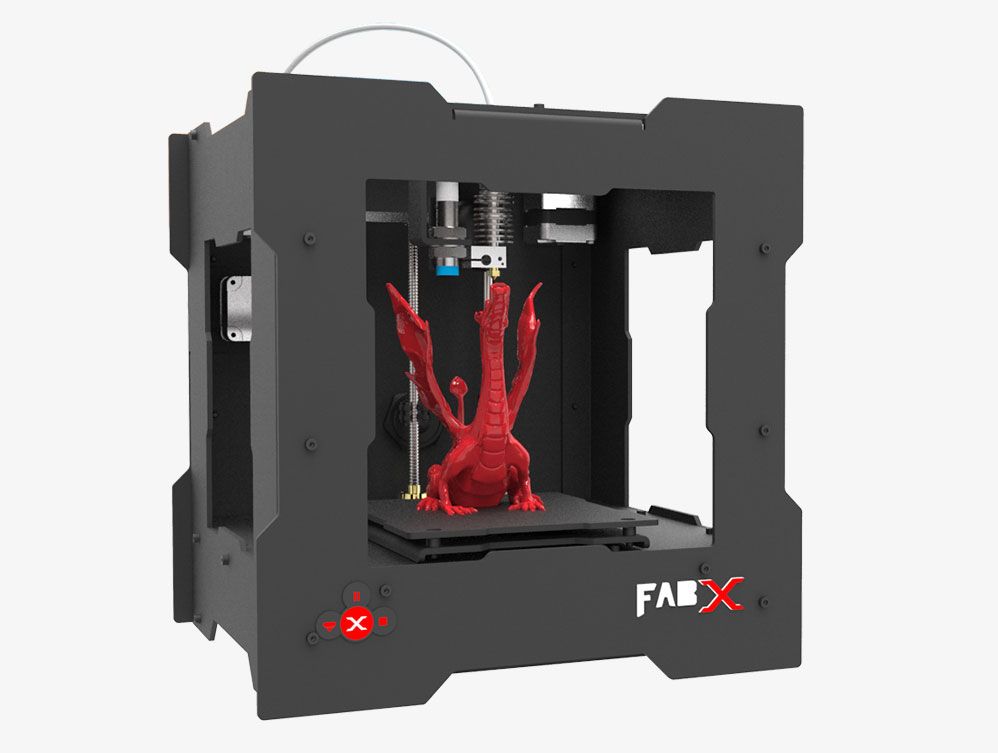
Contents:
- EinScan 3D scanners
- For beginners, designers or education
- Scanners for objects of various sizes
- 3D scanning of people and their faces
- EinScan Pro 2X 3D scanner 2020 900 Transcan0
- 3D-scanner 8 C007 indicators need to be understood in order to choose what you need
- Accuracy
- The use of professional 3D scanners in metrology
- The use of 3D scanners in mechanical engineering
- Reverse engineering
- Quality Control
- Laser 3D scanner Freescan UE
- High-precision stationary 3D scanner Autoscan Inspec
- OptimScan-5M Metrological 3D scanner 9000 EinScan Series 3D Scanners
For Beginners, Designers or EducationalScanning small objects requires precision and advanced settings in the capture software. The first thing users are guided by is the scanning area. Using two models - EinScan-SP and EinScan-SE - it will be possible to scan an object from 30 × 30 mm.

EinScan-SP and EinScan-SE are useful for beginners, designers and educational users. Desktop scanners SE and SP are the easiest to learn.
Key benefits:
- Easy device setup with Plug and Play technology;
- Russian software interface;
- the ability to scan objects of different sizes - from small to large; nine0008
- texture tracking.
- 1 second per shot;
- Russified software;
- automatic and fixed operation;
- Aligns scanned data with marks.
- 1 second per shot;
- 45 seconds for 360-degree scanning in AutoScan mode;
- Russified software;
- automatic alignment of multiple scans; nine0008
- API access service for 3D printers of any brand.
Scanners for objects of various sizes
aIn this category, models with the “H” index successfully demonstrated their capabilities: EinScan H , EinScan HX from the line of hybrid devices.

The portable EinScan H is the most affordable for the price.
0066
- EinScan H - an infrared emitter has been added to the LED illumination;
- EinScan HX - white LED light combined with a blue laser.
- Structured radiation of the LED source and scanner laser;
- In Laser Scan mode, object scan accuracy is 0.04 mm; nine0008
- Minimum point distance 0.05 mm;
- High efficiency in fast scan mode - 1,200,000 points/s;
- Full color copy.
- Two scanning technologies - LED and invisible infrared light, combined in one device;
- Scanning people (portrait, full-length) and other living objects;
- High accuracy of scanned data up to 0.05 mm and volumetric accuracy of 0.1 mm/m;
- Fast scanning and large FOV scanning 420*440 mm.
- The new principle of 3D scanning of the device in manual HD mode, which allows scanning without the use of markers (as Einscan Pro HD does). The old model could not scan without markers in this mode. The quality and detail of scans have also been improved. nine0008
- Higher device scanning accuracy in manual HD mode, improved volumetric accuracy for scanning large objects
- Higher scanning speed in manual HD mode
- Increased 3D scanning area
- Added alignment modes in manual HD mode: alignment by markers, alignment by geometry , hybrid alignment. This expands scanning capabilities and efficiency in a wider range of tasks and areas.

- Color Pack 3D scanning module - an additional camera that allows you to scan with color and texture; nine0008
- Industrial Pack - turntable and tripod. Suitable for high quality scanning of small objects in the studio.
- characteristics of the object;
- user qualification; nine0008
- scanner settings.
- the highest accuracy;
- the ability to upload scans to processing programs; nine0008
- compatible with CAD/CAM technologies;
- work with objects of various sizes and shapes, including those with complex geometry;
- texture tracking and color imaging.
- reverse engineering;
- ultra-precise 3D quality control;
- implementation of intermediate stages of the technological chain of additive manufacturing; nine0008
- faster prototyping and other operations.

- high speed;
- ultra-precise measurement and digital copy saving;
- processing of objects regardless of the size and complexity of the form;
- possibility of integration into automated production systems. nine0008
- reverse engineering, or reverse engineering;
- metrological control;
- test measurements of geometrical parameters for the purpose of quality control and detection of defects;
- creation of archives of digital models.
- Absolutely accurate data for reference comparison;
- measurement of millions of surface points;
- high speed operation;
- possibility of automatic operation. nine0008
- user friendly interface;
- the accuracy of the 3D model reaches the metrological level with an error of 10 µm; nine0008
- the device can be used for non-contact measurement and quality control;
- the process is fully automated.

- accuracy - 15 microns; nine0008
- two 5-megapixel cameras;
- high processing speed;
- blue light scanning technology.
- Light weight, only 240g;
- Fast 3D scan, 25 sec single jaw, 1 min full arch;
- 2 tip sizes, suitable for adults and children;
- AI Scan - speed up the scanning process;
- Powerful software, ortho modeling and oral health report. nine0008
- scanning speed of one jaw - 13 seconds;
- high accuracy - 7 µm;
- data export to virtual articulator;
- the ability to work with non-separable objects; nine0008
- own fully Russified Dental Scan software compatible with most CAD/CAM solutions.

This high-tech solution makes it possible to use these two professional scanners. Manual mode allows you to scan objects of different sizes - medium and large.
Photo of a 3d scanner EinScan HXCopying accuracy is so great that when scanning objects of works of art, it is possible to obtain a perfect replica. For medical institutions, this is also a worthy find. Separately, it should be noted the presence of a built-in color camera.
3D scanning of people and their faces
Living objects require special scanning technology.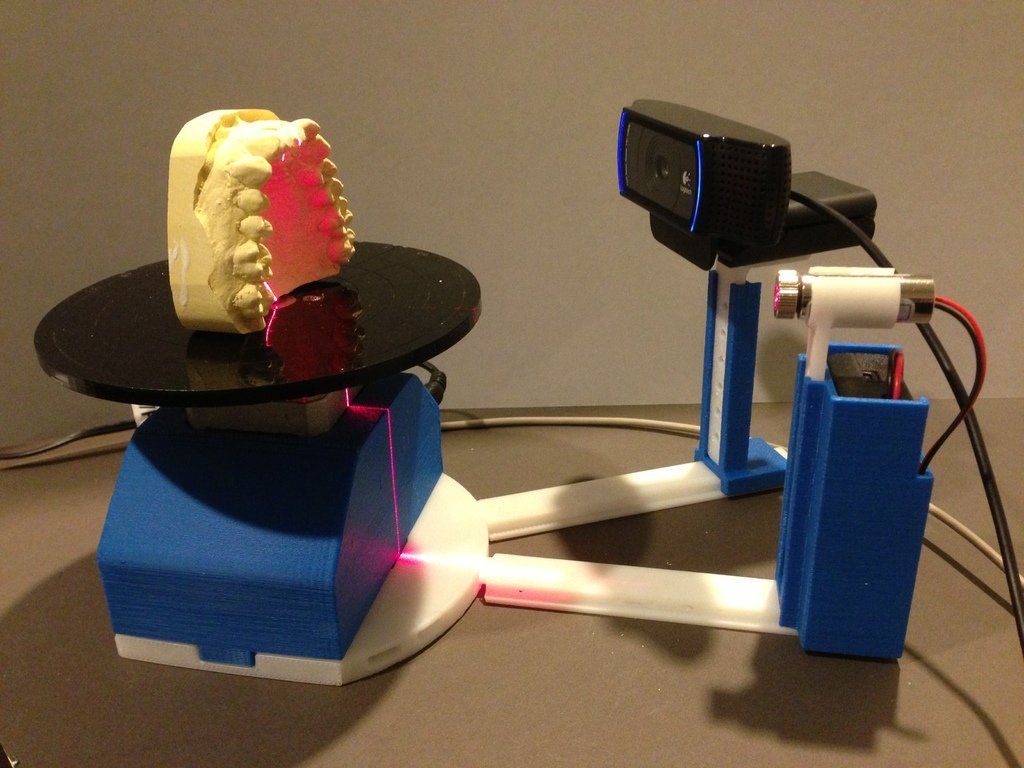 You can get a digital copy of a fragment of a human body, face and hair using EinScan H hybrid models - thanks to two light sources and a color camera, they produce an ideal 3D model with texture preservation. nine0003
You can get a digital copy of a fragment of a human body, face and hair using EinScan H hybrid models - thanks to two light sources and a color camera, they produce an ideal 3D model with texture preservation. nine0003
HX is a universal scanner model, and Einscan Pro HD/Einscan pro 2x 2020 are multi-functional scanners that have the ability to perform tasks in various industries. nine0003
The EinScan Pro HD is an upgraded scanner from the older Einscan Pro 2x series thanks to its ergonomic and high quality design. Models in this range can be used with a special tripod.
This professional 3D scanner provides high precision scanning of objects in both operating modes: up to 0. 045+0.3 mm/m.p. in manual mode and up to 0.04 mm. in fixed scan mode.
045+0.3 mm/m.p. in manual mode and up to 0.04 mm. in fixed scan mode.
Manual object scanning has two submodes: Rapid and HD, the latter providing a higher level of detail. nine0003
The maximum possible scanning speed for this scanner is 3 million points per second. Even aside from the specs, you can see that the device is extremely fast in real-life scenarios. For example, a 220 x 71 cm low relief sculpture can be fully digitized in color in less than a minute.
Scanning of human bodies is also possible with this device, it provides decent quality. Last but not least, the device can scan color materials, including even textured images. This feature is available as a paid option called the Color Pack. nine0003
EinScan HX is more expensive than the EinScan H scanner, and professional scanners, which include the EinScan Pro HD, are traditionally more expensive than others of the "classmates" and therefore are available to large additive manufacturers.
EinScan Pro 2X 2020 3D Scanner
Portable and versatile handheld 3D scanner for high precision results
The EinScan Pro 2X 2020 3D scanner is an excellent option for scanning small, medium and large objects.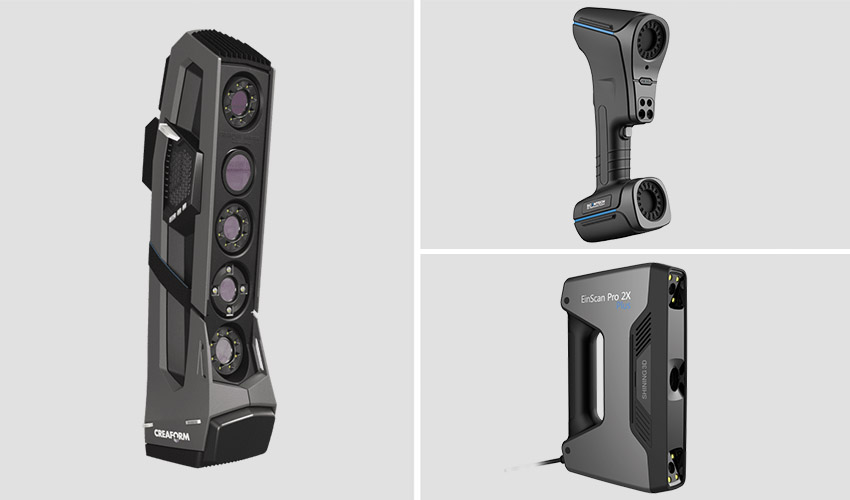 nine0003 3D scanner EinScan Pro 2X 2020
nine0003 3D scanner EinScan Pro 2X 2020
The updated scanner model has improved the main characteristics, added new 3D scanning algorithms. Thus, Einscan Pro 2x 2020 has become a more affordable version of Einscan Pro HD, retaining the advantages and features of the old model.
The main improvements of the new model:
Einscan Pro 2x 2020 3D scanner is compact and lightweight, you can take it anywhere with you. It has a comfortable grip and is light weight, and if you need HD mode accuracy, put the scanner on a tripod. The scanner is connected via USB 3.0 to a computer or laptop. nine0003
The latest developments in data capture and optimized algorithms make the Einscan Pro 2x 2020 3D Scanner a true breakthrough with a scanning speed of up to 1,500,000 points per second (at 30 frames per second) in manual scanning mode.
If you need to expand the functionality of the scanner, Shining 3D offers several options:
Transcan C
3D Scanner The Transcan C 3D Scanner is a professional scanning grade scanner capable of capturing “extraordinarily” accurate high-resolution scans of small to medium objects thanks to two 12-megapixel color cameras with adjustable scanning range and the ability to switch between multiple permission levels within a single project. nine0003
nine0003
The 3D scanner has a sliding design that allows you to easily switch the scanning range between 150mm x 96mm and 300mm x 190mm to suit different sizes of objects. The multi-resolution fusion algorithm allows you to mix high, medium and low resolutions in the same project, making the scanner much more efficient, and its two cameras can capture a 24-bit color map for detailed 3D color data.
TheTranscan C features a structured light scanning mode with an automatic turntable that, in combination with the scanning software's stitching algorithm, allows “efficient 3D model acquisition without manual intervention. nine0003
What other indicators do you need to understand in order to choose what you need? - ease of setup and others. Of course, the properties are considered in a complex: the most important parameter is considered as a basic one, the rest are considered as auxiliary, but at the same time mandatory. nine0003
3D Scan Accuracy
The degree to which the copy matches the original is perhaps the most important indicator.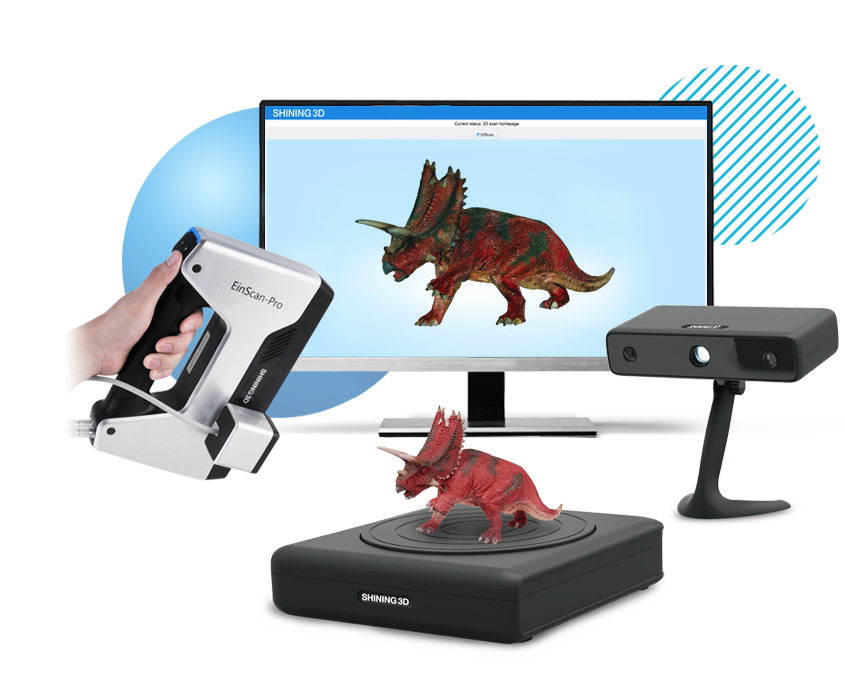 The technical characteristics of scanners indicate the maximum allowable deviation of the scan size from the real object. The smaller the number, the more accurate the 3D scan will be. But the deviation in reality can be greater, since it is quite difficult to create ideal conditions for the device to work, the result is affected by:
The technical characteristics of scanners indicate the maximum allowable deviation of the scan size from the real object. The smaller the number, the more accurate the 3D scan will be. But the deviation in reality can be greater, since it is quite difficult to create ideal conditions for the device to work, the result is affected by:
The use of professional 3D scanners in metrology
3D scanners handle the process of measuring the dimensions and shapes of models in a matter of minutes, unlike traditional coordinate measuring machines. The non-contact mode of operation allows the device to scan surfaces of complex shapes (internal corners and edges), recesses and other hard-to-reach places.
After receiving all the necessary data, they are transferred to the computer for processing. The program performs a comparison of indicators in order to identify deviations - a mismatch in shape and size, the presence of chips, cracks and other deformations caused by mechanical stress or corrosion processes.![]() nine0003
nine0003
Innovatively adapted blue laser 3D scanning technology
For metrology purposes for scanning a small object, we recommend the OptimScan-5M, 3M and AutoScan Inspec Scanner-Inspector. All these devices to some extent belong to the same price niche, are multi-tasking, make it possible to obtain high-quality digital 3D models for comparison with reference samples, demonstrating:
Professional, they are also industrial, 3D scanners help to perform the following tasks:
3D scanning in mechanical engineering
The integration of 3D scanning technologies into production processes gives undoubted preferences. Properties of modern industrial scanners:
With the help of 3D scanners and specialized software, numerous processes can be performed:
Reverse engineering
Reverse engineering of complex shapes is one of the areas of industrial engineering. A physical sample is converted into a digital copy using a 3D scanner. The resulting polygonal model is converted into a CAD format. The digital copy is modified and modified to achieve the specified parameters. Unlike traditional design, work takes many times less working time. The finished object becomes the basis for mass production. nine0003
The resulting polygonal model is converted into a CAD format. The digital copy is modified and modified to achieve the specified parameters. Unlike traditional design, work takes many times less working time. The finished object becomes the basis for mass production. nine0003
Quality control
Metrological 3D scanners make it possible to obtain a point cloud of the test sample, on the basis of which an ultra-precise 3D model of the part is formed. It is compared with a digital copy of a reference sample or with an existing CAD model.
Benefits of 3D quality control:
The obtained data can be used for reverse engineering.
Scanners from the metrological category are recommended for quality control.
FreeScan UE
Shining 3D Handheld Laser Scanner FreeScan UE is the latest addition to the FreeScan high performance 3D scanner line.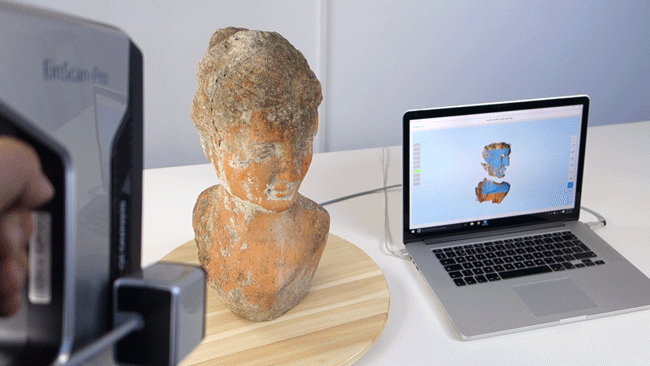 The device adopts the patented blue laser technology and features high precision and stable repeatability.
The device adopts the patented blue laser technology and features high precision and stable repeatability.
Sunny Wong, product manager of Shining 3D, states: “Innovative adaptation of blue laser 3D scanning technology, high precision and stable repeatability, and easy and convenient operation of hardware and software, enable FreeScan UE to effectively and accurately upgrade digital workflows in engineering and inspection tasks”. nine0003
The metrology-grade FreeScan UE system delivers 0.02 mm accuracy and 0.02 mm + 0.04 mm/m volumetric accuracy. With a maximum scan area of 510 x 520mm, users get a field of view suitable for large-scale reverse engineering projects.
AutoScan Inspec High Accuracy Stationary 3D Scanner AutoScan Inspec
Works with native software developed by SHINING 3D programmers for industrial applications.
OptimScan-5M 3D metrological scanner
OptimScan-5MThe professional 3D metrological scanner OptimScan-5M shows the best consumer characteristics required just for 3D inspection:
AutoScan Inspec Desktop Scanner is a two-in-one scanner-inspector that works in automatic mode. The scanner performs 3D scanning with the highest precision and 3D inspection of objects. This is one of the best devices for working with parts of complex shape and the smallest elements:
Solutions for dentistry
In dental orthopedics, 3D scanners - intraoral and dental - have become indispensable assistants for orthopedists and dental laboratory specialists. The former are used for scanning, creating digital impressions and then manufacturing perfectly fitting prostheses, crowns, veneers and other dental restorations using a 3D model using CAD / CAM technology.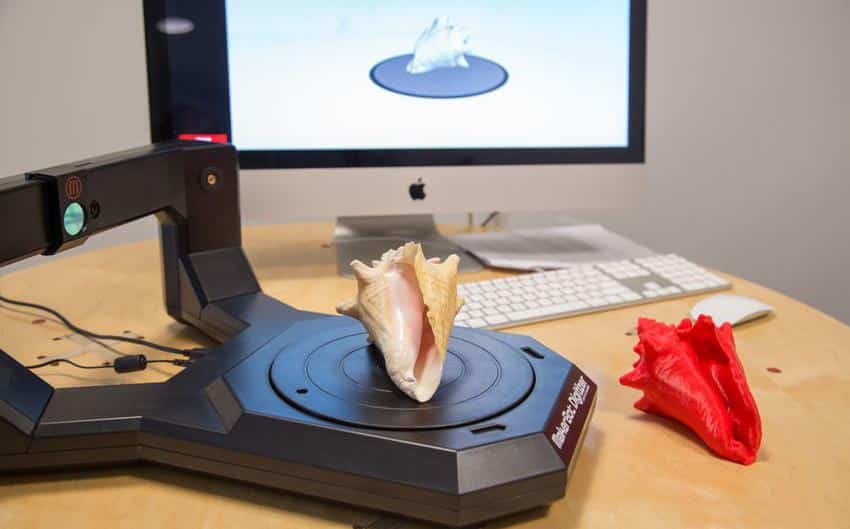 The second digitizes plaster casts or abutments with tiny elements. nine0003
The second digitizes plaster casts or abutments with tiny elements. nine0003
Aoralscan 3
The Aoralscan 3 is a compact, powerful device with simple, user-friendly controls and an updated algorithm:
AutoScan-DS-MIX 3D Dental Scanner
AutoScan-DS-MIXAutoScan-DS-MIX is an exceptional performance dental scanner with two 5 megapixel cameras and advanced blue light 3D scanning technology :
SHINING 3D's 3D modeling and additive manufacturing products make it easy to find the right equipment for solving tasks in industry, medicine, education and everyday life.
Top Ten 3D Scanners Between $100 and $100,000 There are several ways for you: you can of course create your 3D model from scratch in a 3D modeling program or find a suitable one on the Internet, but you can also scan an existing object! The purpose of this review is to help you understand the variety of 3D scanners available and offer the best in every price segment from a photogrammetric smartphone app to professional 3D scanners. nine0003
Scanners are listed in ascending price order so you can choose the one that suits your budget and use the resulting 3D models for both 3D printing and animation.
If you are not satisfied with the suggested solutions, there is an extended overview at this link.
3D scanner in hand:
1. Best smartphone app: Autodesk 123D Catch (free)
Autodesk 123D Catch is a free photogrammetric application.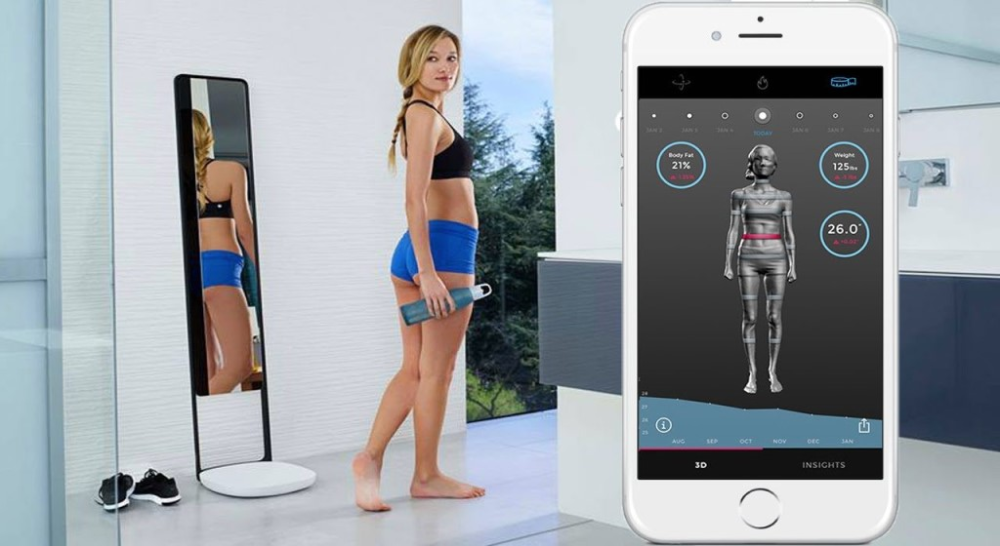 It allows you to create a 3D model from photographs of an object taken from different angles. You can use it to scan objects, people, and even the landscape. For some applications, if you don't need perfect accuracy, you don't need special equipment. This application actually provides quite good detail and is easy to use. However, it will take you at least 30 minutes for the app to process your photos as the processing takes place on the server and it takes time to send them. nine0003
It allows you to create a 3D model from photographs of an object taken from different angles. You can use it to scan objects, people, and even the landscape. For some applications, if you don't need perfect accuracy, you don't need special equipment. This application actually provides quite good detail and is easy to use. However, it will take you at least 30 minutes for the app to process your photos as the processing takes place on the server and it takes time to send them. nine0003
2. Best DIY 3D Scanner: Kinect ($99.99)
The Xbox Kinect is designed to expand your gaming experience. It is not designed for 3D scanning, but you can easily find manuals and third party software (like ReconstructMe) to turn it into a 3D scanner. If your arms are growing out of your shoulders, this is an interesting and inexpensive solution for 3D scanning.
Price: $99.99
Resolution: 0.051 mm
)
This scanner can be attached to your tablet or phone (generally designed for iPad, but can be adapted to other devices). Lightweight and easy to use, with a very good resolution. Suitable for large items (can scan a full-length person) and outdoor scanning. You will be able to use it with software running on Occipital's SDK. This will increase the resolution and give you access to special features like room scanning. It probably won't be something you'll use for 3D printing, but it's interesting for game development, for example. nine0003
Lightweight and easy to use, with a very good resolution. Suitable for large items (can scan a full-length person) and outdoor scanning. You will be able to use it with software running on Occipital's SDK. This will increase the resolution and give you access to special features like room scanning. It probably won't be something you'll use for 3D printing, but it's interesting for game development, for example. nine0003
Price: $ 379
Resolution up to: 0.5 mm
accuracy to: 4 mm
4. The best of cheap manual 3D scanners: Cubife ($ 399)
3D-scanners may be quite affordable and easy to use if you choose from inexpensive portable models. Cubify fits these criteria very well and has a relatively good resolution. But still, its capabilities are not enough for texture scanning and it is better to use it for subsequent 3D printing of one-color models. nine0003
Price: $ 399
Resolution: 0. 9 mm
9 mm
Resolution at a distance of 0.5 m: 1 mm
3D scanner on the table:
5. The best and cheapest table 3D 3D- 3D- 3D- Scanner: Matter and Form ($519)
If you're looking to take your quality to the next level, you can purchase a desktop 3D scanner. This model is compact, easy to use, and delivers good resolution, especially considering the price (not your go-to option if you're looking for perfection, but great for educational and demo purposes). The scanning process takes place with the help of a laser and a rotating platform. The scan takes about five minutes and simultaneously reads the texture of the object. nine0003
Price: $ 519
Resolution: 0.43 mm
accuracy: ± 0.25 mm
6. The best device "two in one": XYZPRITING DA VINCI 1.0 ($ 600) 003 9000 combines a 3D scanner and a 3D printer. The quality of the models is not too high, but the price is very low for such a combined device. 7. Best value for money portable 3D scanner: Fuel3D Scanify ($1490) Price: $ 1490 8. Best price The scanner uses a different scanning technology than others. Instead of a dual laser scanning system, it uses a structured light source and cameras for fast scanning with very fine detail down to 0.06mm! The scanner comes with DAVID Pro Edition 3 software that works with OBJ, STL and PLY 3D file formats that can be exported to other programs for further editing. Price: $ 3995 9. Best professional 3D scanner: SolutionIX REXCAN 4 ($ 79 900 900) 00 9000 9000 this The 3D scanner and its price provides much better scanning quality. Solutionix Rexcan is equipped with two cameras for greater accuracy. It uses optical phase shift triangulation technology and two high-resolution CCD cameras to provide high-precision data. The scanner can be used to scan larger objects by increasing productivity with a photogrammetric system. As an option, it can be equipped with an automatically rotating platform capable of supporting up to 50 kg of weight. nine0003 Price: $ 79 900 10. Best professional manual 3D scanner: Metrascan 750 ($ 50,000 - $ 100,000) CreaForm Metraskan 750 is a complete professional, production solution for accurate 3D scanning. This makes the XYZprinting Da Vinci the easiest solution for beginners who want to get into the world of 3D scanning-printing. nine0003
This makes the XYZprinting Da Vinci the easiest solution for beginners who want to get into the world of 3D scanning-printing. nine0003
Professional 3D scanners:
Very easy to use, intuitive, and feels good in the hand, this scanner delivers good accuracy and texture quality. The only limitation is that the size of the scanned area is limited, which is great for small objects, but for scanning a full-length person, for example, it will not work. nine0003
Resolution: 0.35 mm
accuracy: to 0.3 mm  nine0003
nine0003
Resolution: 0.06 mm
accuracy: 0.5% of the size of the object
accuracy: from 0.03 to 0.71 mm 
Learn more


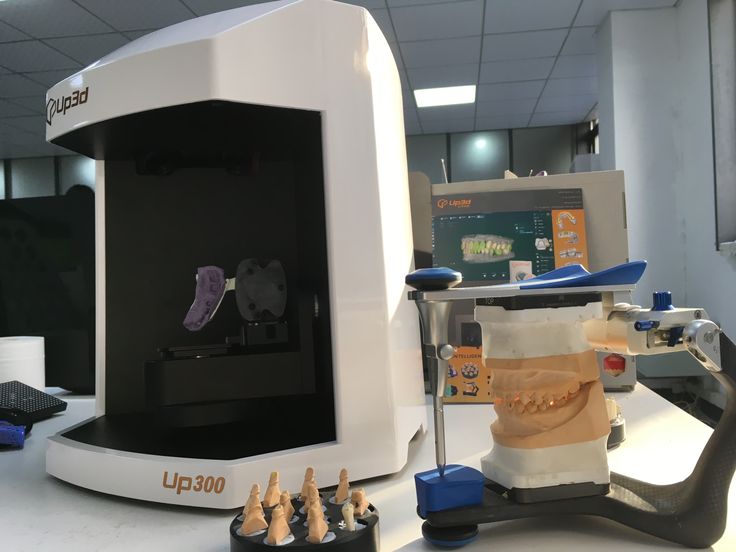

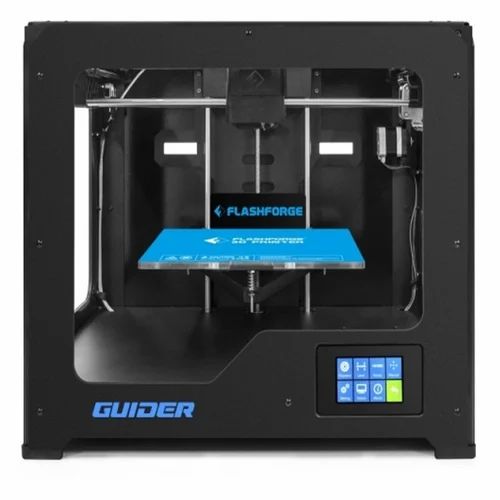 Prices may vary by region, over time and do not include additional products or services (taxes, shipping, accessories, training, installation, …).
Prices may vary by region, over time and do not include additional products or services (taxes, shipping, accessories, training, installation, …).